
What is Refrigeration Cycle? Explanation, Components & Diagram ElectricalWorkbook
Refrigeration Cycle Heat flows in direction of decreasing temperature, i.e., from high-temperature to low temperature regions. The transfer of heat from a low-temperature to high-temperature requires a refrigerator and/or heat pump. Refrigerators and heat pumps are essentially the same device; they only differ in their objectives.
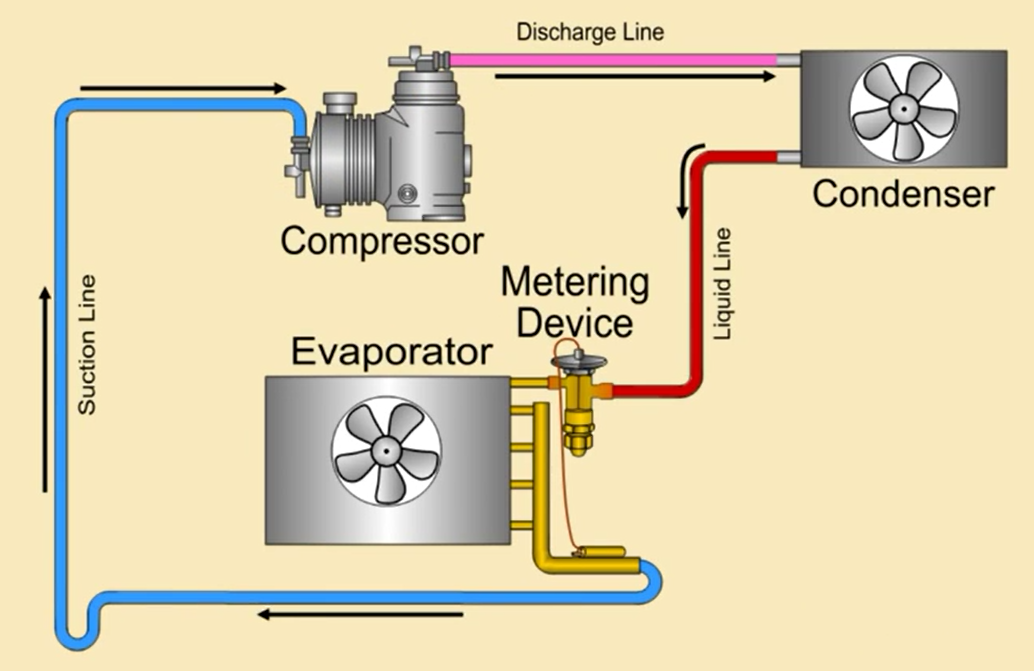
Mechanical Info World Ideal Basic Refrigeration cycle
Shown below are the cyclic refrigeration device operating between two constant temperature reservoirs and the T-s diagram for the working fluid when the reversed Carnot cycle is used. Recall that in the Carnot cycle heat transfers take place at constant temperature. If our interest is the cooling load, the cycle is called the Carnot refrigerator.
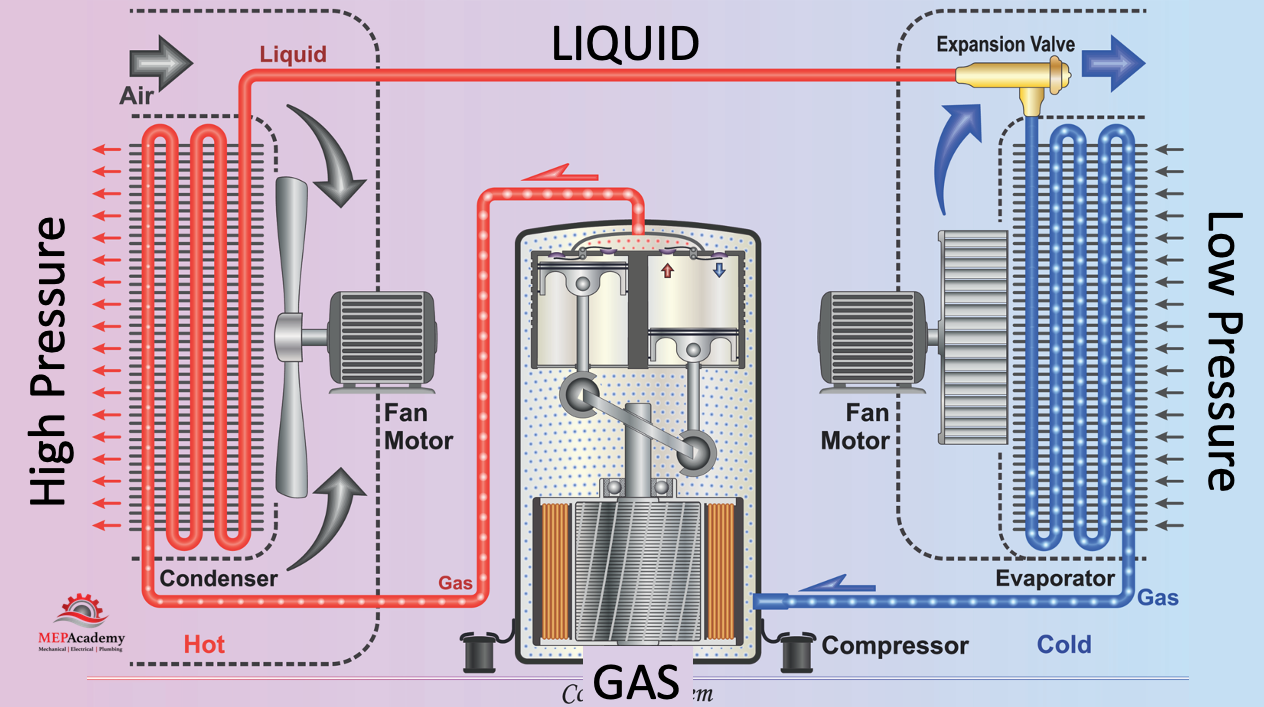
Refrigeration Cycle 101 MEP Academy
Fig. 1 shows schematic diagram of simple Vapour Compression Refrigeration System running on Vapour Compression Cycle (V.C.C.). Vapour compression refrigeration system consists of four principal elements. They are Compressor, Condenser, Expansion Valve and Evaporator.
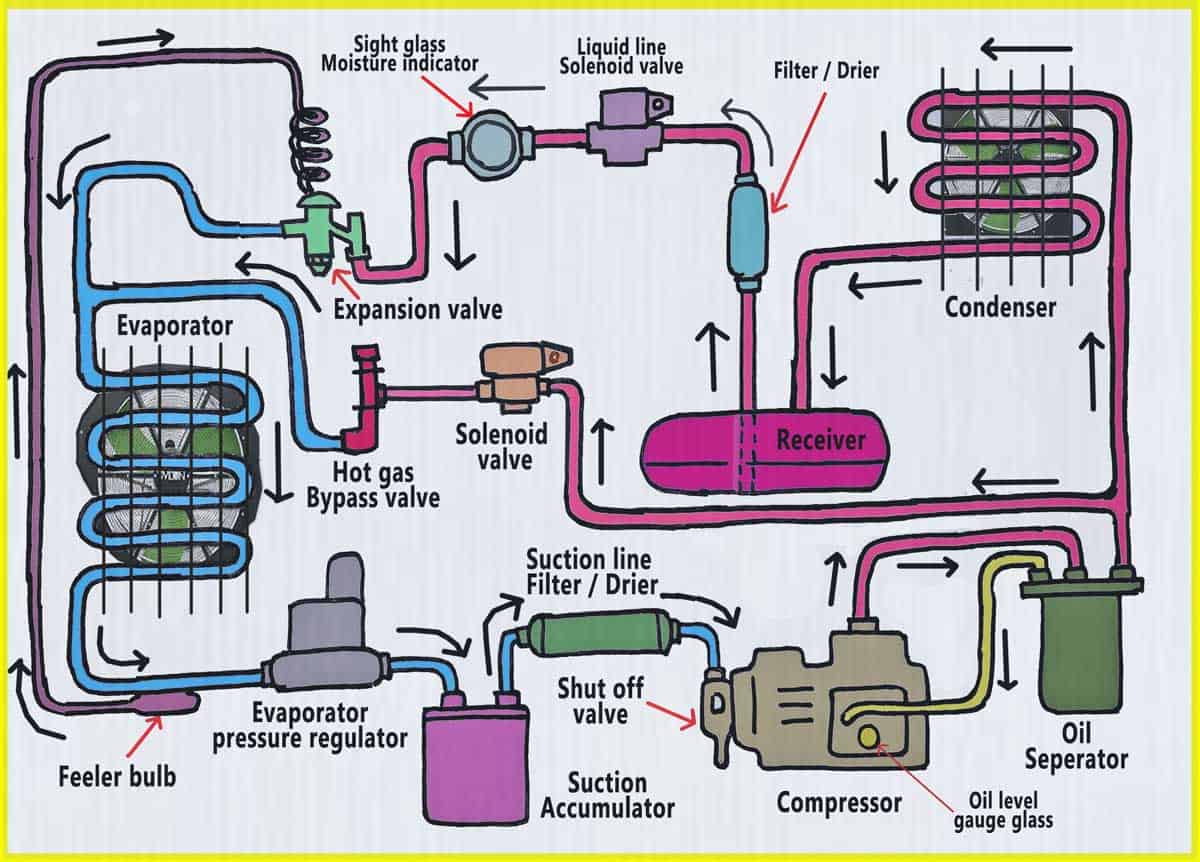
15 Major Components and Controls of Refrigeration System Refcon hvac
1. Reciprocating compressors 2. Scroll compressors 3. Rotary compressors The condenser The condenser, or condenser coil, is one of two types of heat exchangers used in a basic refrigeration loop. This component is supplied with high-temperature high-pressure, vaporized refrigerant coming off the compressor.
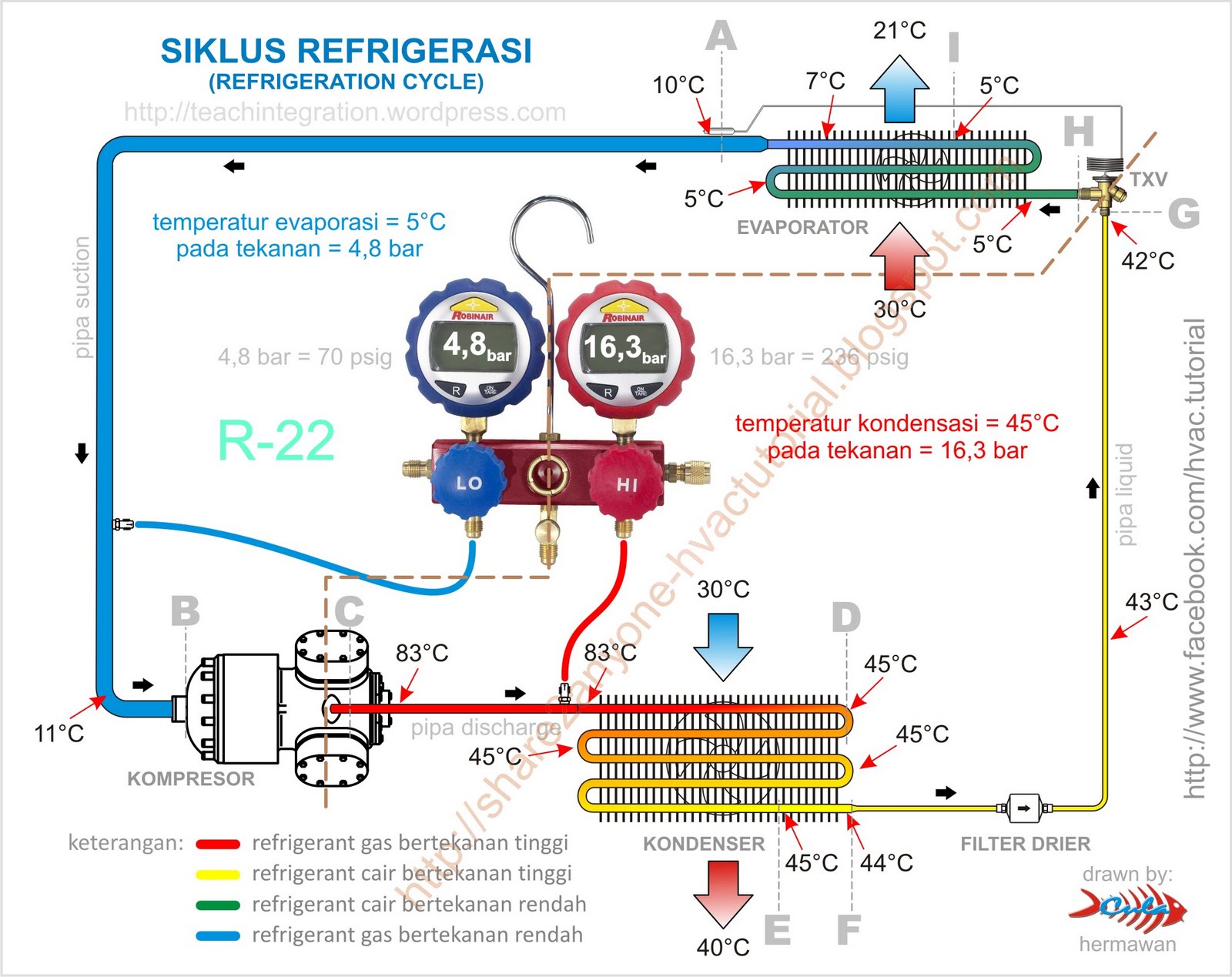
Refrigeration April 2013
We'll discuss the refrigeration cycle using this cycle diagram. Feel free to copy this refrigeration cycle diagram and print it out. Component #1 is the compressor. It takes refrigerant vapor in from the low pressure side of the circuit, and discharges it at a much higher pressure into the high pressure side of the circuit.

HVAC system acting up? Take a look at its superheat measurements HVAC BRAIN
The refrigeration cycle is a thermodynamic cycle that generates refrigerating effects with the use of mainly an evaporator, compressor, condenser & expansion valve.
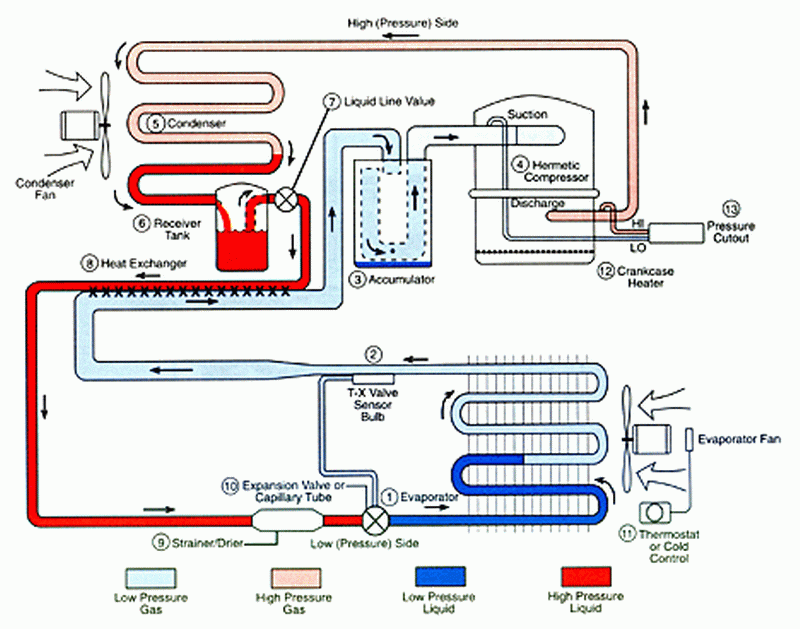
CHILLER CHOONG The Basic Refrigeration Cycle
Table of Contents What is a Refrigeration? What is Refrigeration Cycle? Refrigeration Cycle Working Types of Refrigeration Cycles 1) Vapour Compression Cycle 2) Vapour Absorption Cycle 3) Gas Cycle 4) Stirling Cycle 5) Reverse Carnot Cycle Components of Refrigeration System Advantages and Disadvantages of Refrigeration System
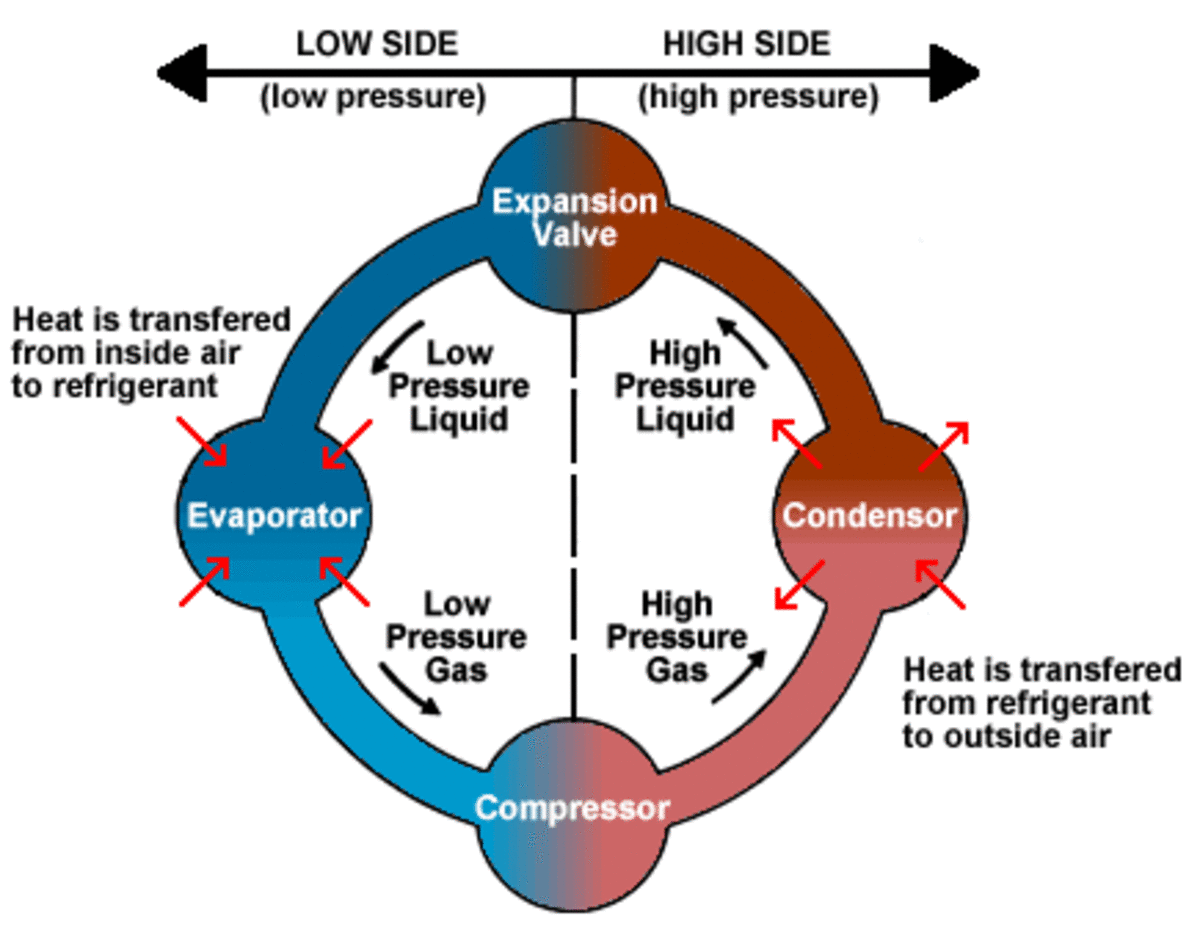
Should Water Be Used as a Refrigerant? Owlcation
August 1, 2023 When troubleshooting a refrigeration system, it is important to understand how the refrigeration cycle accomplishes the goal of removing heat from a room and rejecting the heat absorbed by the refrigerant to the outdoor ambient space. The entire process is actually quite simple.
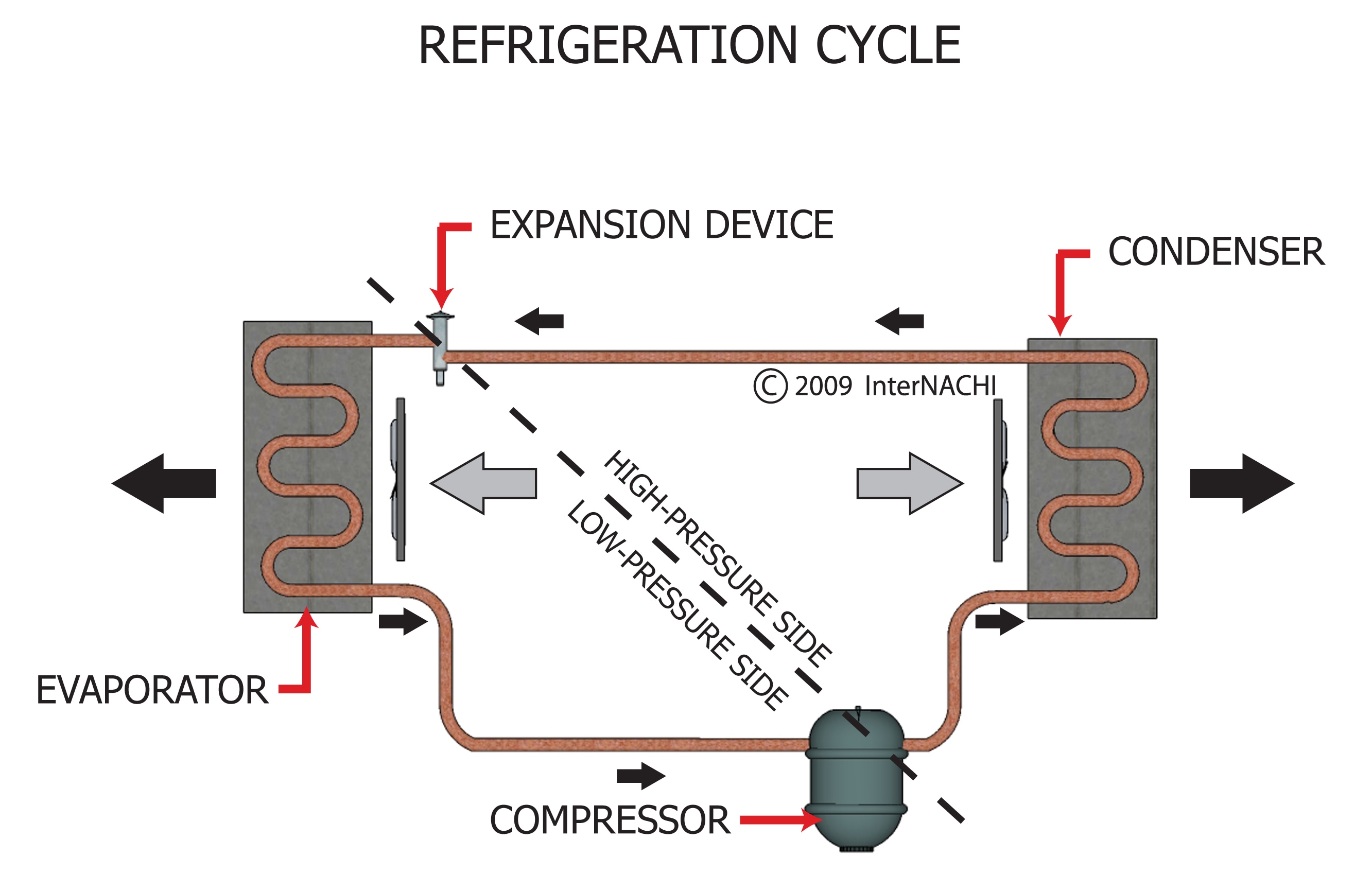
Refrigeration Cycle Inspection Gallery InterNACHI®
This is how the refrigeration cycle diagram looks: Yeah, it seems complicated at first, but it will be easier to understand once I have explained the refrigeration cycle diagram section by section. It important to understand the basic refrigeration cycle, to comprehend what is going on within the air conditioner units, we cannot see it.
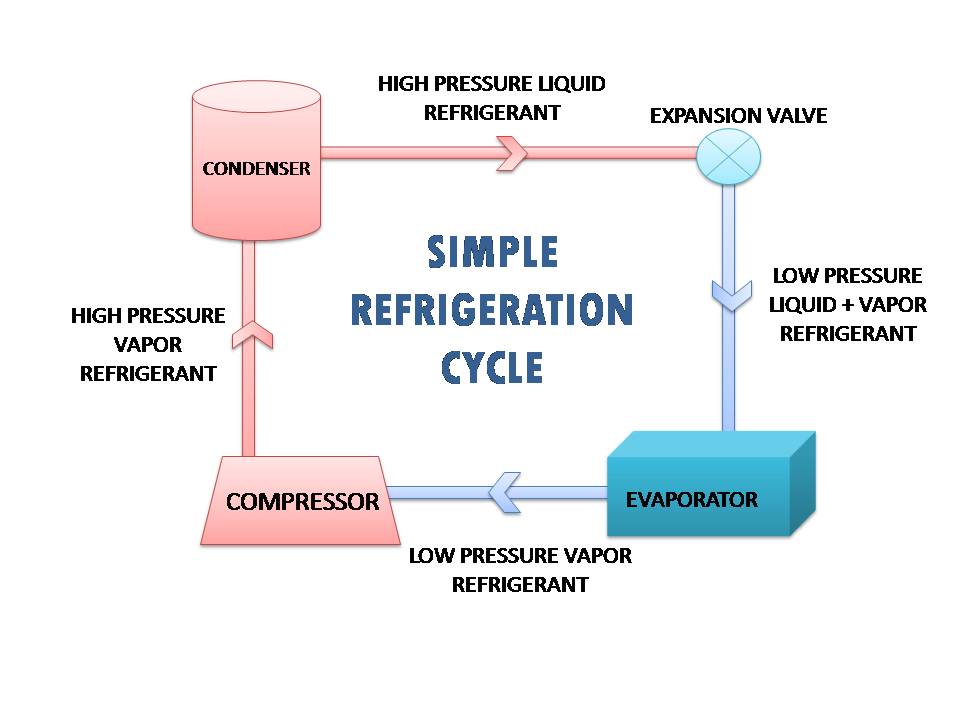
The 4 Main Important Components of Refrigeration Cycle
In this HVAC Video, I give a Tutorial to Explain the Refrigeration Cycle with Superheat and Subcooling Step by Step, Detailed and Concise! I go over how the.
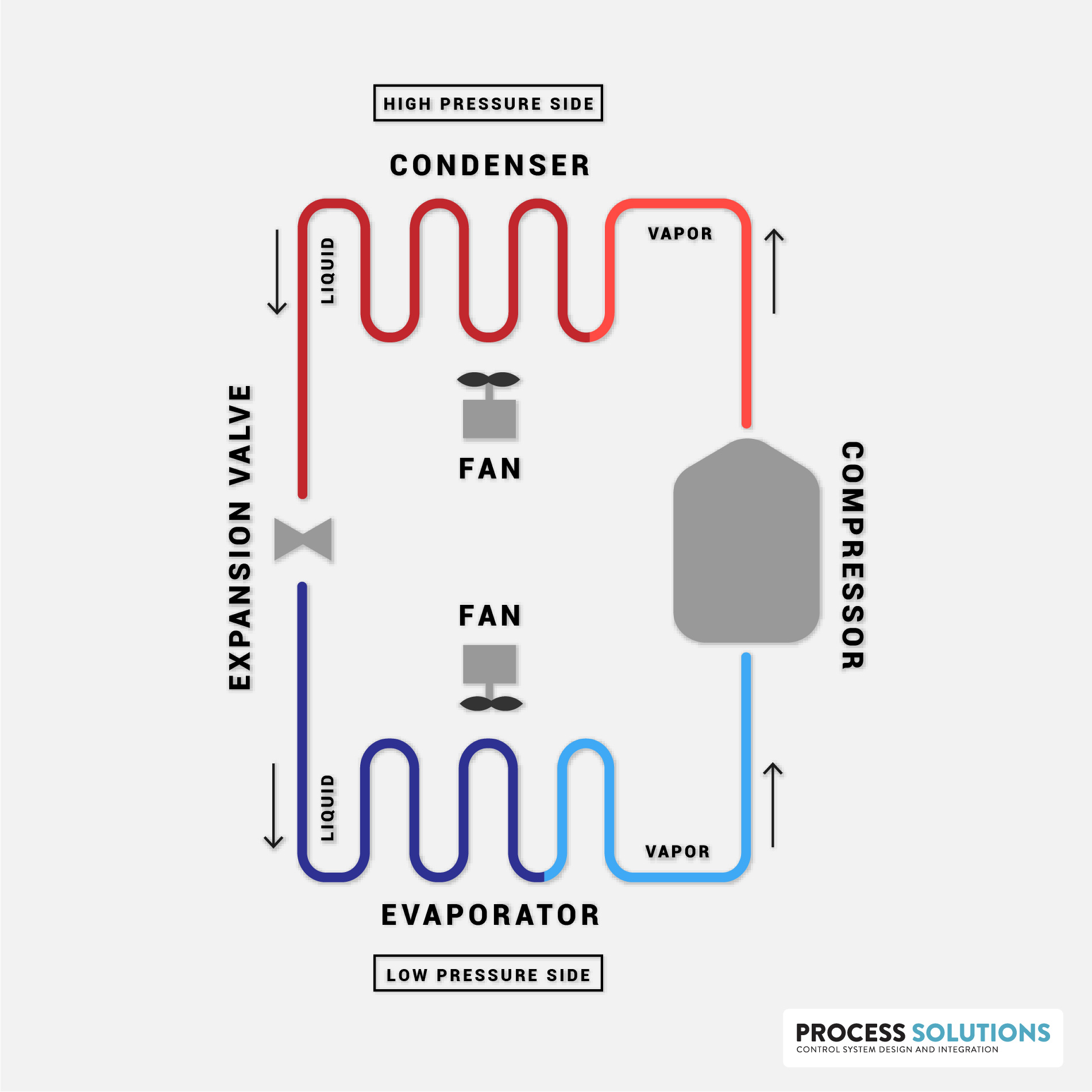
How Does a Compression Refrigeration System Work? Process Solutions, Inc.
This refrigeration cycle works by controlling the level of energy in the system's refrigerant: Some parts of the system have energy-packed refrigerant that is ready to release heat, whereas other parts have energy-depleted refrigerant that is ready to absorb heat. READ MORE ABOUT • Refrigeration Cycle • Compressor Technology • Refrigeration

The Refrigeration Cycle In easy to understand descriptions & diagrams!
Refrigeration Cycle Explained in Easy Way. This is a refrigeration cycle diagram of regular central air conditioner units. All air conditioner units must have the five basic components to work: The compressor. The condenser. The expansion device. The evaporator. The copper refrigerant tube (a tube that connects these air conditioner parts) We.
Knowledge — Refrigeration Cycle. The refrigeration cycle is a critical… by Ravti Ravti
1. The Compressor. The Compressor can be thought of as the heart of the process. It acts like a pump to create the circulation by compressing the refrigerant gas, creating a pressure difference that drives the refrigerant around the circuit in a continuous cycle. 2. The Condenser.

HVAC The Refrigeration Cycle HVAC Beginners
For comparison, a simple stylized diagram of a heat pump's vapor-compression refrigeration cycle: 1) condenser, 2) expansion valve, 3) evaporator, 4) compressor (Note that this diagram is flipped vertically and horizontally compared to the previous one) [6] Temperature-entropy diagram of the vapor-compression cycle.

Polar HVAC NM How to maintain your swamp cooler, when to replace it, and what to replace it
Refrigeration Cycle Diagram: How It Works and What You Need to Know: A basic refrigeration cycle consists of 4 major components: Compressor, Condenser, Thermostatic Expansion Valve (TEV), and Evaporator. These components allow the heat to transfer from one location to another, creating a cooling effect in the desired area.
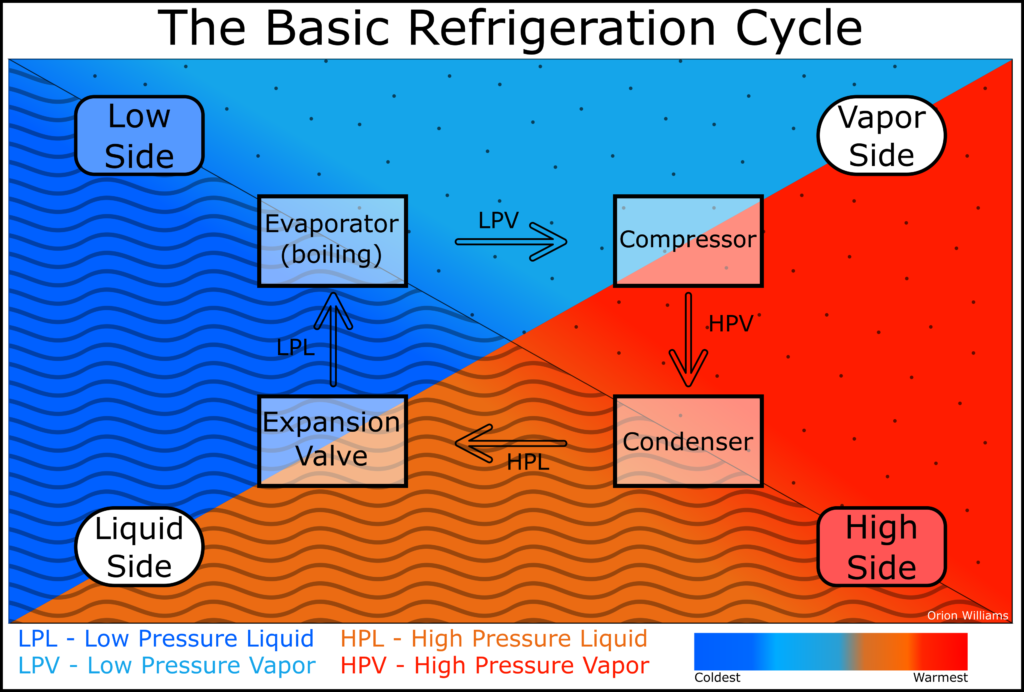
I made a handy graphic explaining the basic refrigeration cycle Orion Williams
The following figure indicates the refrigeration cycle schematic with the above-mentioned processes, which can be also represented in the log (p)-h diagram, as shown in figure 1. These thermodynamic processes form a closed cycle called the theoretical Linde circuit, which is standard circuit for real compressor refrigeration systems.